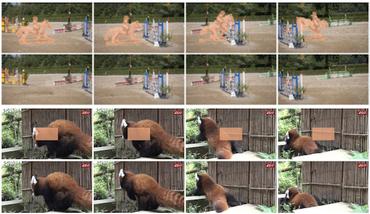Search Results for author: YuanYuan Zhao
Found 12 papers, 2 papers with code
Apollonion: Profile-centric Dialog Agent
no code implementations • 10 Apr 2024 • Shangyu Chen, Zibo Zhao, YuanYuan Zhao, Xiang Li
Besides, we proposed a series of evaluation protocols for personalization: to what extend the response is personal to the different users.
Experts' cognition-driven ensemble deep learning for external validation of predicting pathological complete response to neoadjuvant chemotherapy from histological images in breast cancer
no code implementations • 19 Jun 2023 • Yongquan Yang, Fengling Li, Yani Wei, YuanYuan Zhao, Jing Fu, Xiuli Xiao, Hong Bu
The primary reason for this situation lies in that the distribution of the external data for validation is different from the distribution of the training data for the construction of the predictive model.
Few-shot Multi-domain Knowledge Rearming for Context-aware Defence against Advanced Persistent Threats
no code implementations • 13 Jun 2023 • Gaolei Li, YuanYuan Zhao, Wenqi Wei, Yuchen Liu
Secondly, to rearm current security strategies, an finetuning-based deployment mechanism is proposed to transfer learned knowledge into the student model, while minimizing the defense cost.
DHBE: Data-free Holistic Backdoor Erasing in Deep Neural Networks via Restricted Adversarial Distillation
1 code implementation • 13 Jun 2023 • Zhicong Yan, Shenghong Li, Ruijie Zhao, Yuan Tian, YuanYuan Zhao
Instead of the staged pipeline, the DHBE treats the backdoor erasing task as a unified adversarial procedure, which seeks equilibrium between two different competing processes: distillation and backdoor regularization.
CATFL: Certificateless Authentication-based Trustworthy Federated Learning for 6G Semantic Communications
no code implementations • 1 Feb 2023 • Gaolei Li, YuanYuan Zhao, Yi Li
Most existing studies on trustworthy FL aim to eliminate data poisoning threats that are produced by malicious clients, but in many cases, eliminating model poisoning attacks brought by fake servers is also an important objective.
A deep learning approach to solve forward differential problems on graphs
no code implementations • 7 Oct 2022 • YuanYuan Zhao, Massimiliano Lupo Pasini
We propose a novel deep learning (DL) approach to solve one-dimensional non-linear elliptic, parabolic, and hyperbolic problems on graphs.
DLFormer: Discrete Latent Transformer for Video Inpainting
no code implementations • CVPR 2022 • Jingjing Ren, Qingqing Zheng, YuanYuan Zhao, Xuemiao Xu, Chen Li
Video inpainting remains a challenging problem to fill with plausible and coherent content in unknown areas in video frames despite the prevalence of data-driven methods.
Constructing a Family Tree of Ten Indo-European Languages with Delexicalized Cross-linguistic Transfer Patterns
no code implementations • 17 Jul 2020 • Yuanyuan Zhao, Weiwei Sun, Xiaojun Wan
It is reasonable to hypothesize that the divergence patterns formulated by historical linguists and typologists reflect constraints on human languages, and are thus consistent with Second Language Acquisition (SLA) in a certain way.
Semantic Parsing for English as a Second Language
no code implementations • ACL 2020 • Yuanyuan Zhao, Weiwei Sun, Junjie Cao, Xiaojun Wan
This paper is concerned with semantic parsing for English as a second language (ESL).
Hyperspectral Imaging With Random Printed Mask
no code implementations • CVPR 2019 • Yuanyuan Zhao, Hui Guo, Zhan Ma, Xun Cao, Tao Yue, Xuemei Hu
In this paper, based on a simple but not widely noticed phenomenon that the color printer can print color masks with a large number of independent spectral transmission responses, we propose a simple and low-budget scheme to capture the hyperspectral images with a random mask printed by the consumer-level color printer.
Spectral Reconstruction From Dispersive Blur: A Novel Light Efficient Spectral Imager
no code implementations • CVPR 2019 • Yuanyuan Zhao, Xuemei Hu, Hui Guo, Zhan Ma, Tao Yue, Xun Cao
Developing high light efficiency imaging techniques to retrieve high dimensional optical signal is a long-term goal in computational photography.
The Speechtransformer for Large-scale Mandarin Chinese Speech Recognition
1 code implementation • ICASSP 2019 - 2019 IEEE International Conference on Acoustics, Speech and Signal Processing (ICASSP) 2019 • YuanYuan Zhao, Jie Li, Xiaorui Wang, Yan Li
Attention-based sequence-to-sequence architectures have made great progress in the speech recognition task.




